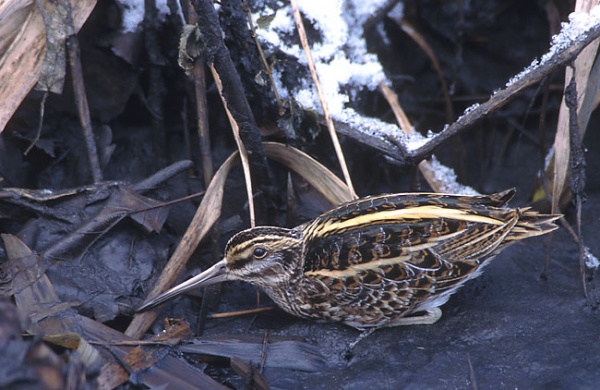Facts About Jack snipe
Let's discuss the jack snipe, also known as the jacksnipe. This diminutive bird is the smallest member of the snipe family and the sole species within the genus Lymnocryptes. The name "jack snipe" may originate from the Welsh term for snipe or the name Jack. The scientific name, Lymnocryptes, is derived from ancient Greek words for "marsh" and "hidden" while minimus translates to "smallest" in Latin.
Adult jack snipes are notably smaller than common snipes. They feature mottled brown plumage, a dark stripe across their eye, and striking yellow stripes on their back that become visible during flight. One of their distinguishing characteristics is their nearly hypnotic bobbing movement while walking. Contrary to common snipes, jack snipes possess two pale lateral crown-stripes on their heads.
These birds are migratory and can be found in regions such as Great Britain, coastal Europe, Africa, and India. They breed in marshes, bogs, tundra, and wet meadows in northern Europe and Russia. Jack snipes are extremely elusive and adept at camouflaging, which makes them difficult to spot. Birdwatchers often employ specific techniques to flush them out of their hiding spots.
In terms of behavior, jack snipes forage in soft mud for insects, earthworms, and plant material. During courtship, the males perform an aerial display that includes a sound resembling a galloping horse. They nest on the ground in concealed locations and typically lay 3-4 eggs. Due to their migratory habits, jack snipes are protected under the Agreement on the Conservation of African-Eurasian Migratory Waterbirds (AEWA).

 China
China